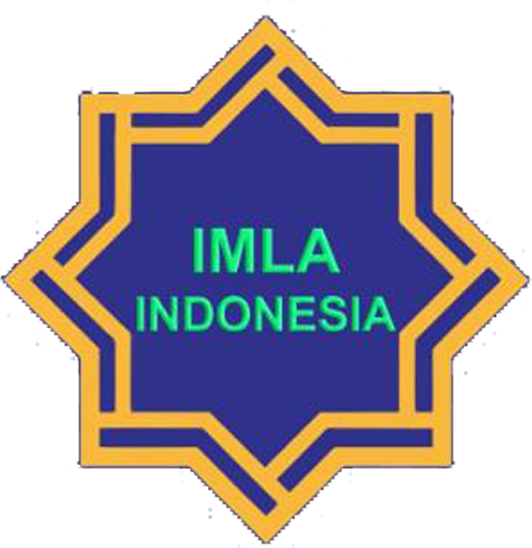IMPLICIT MEANING AND EXPLICITATION IN THE TRANSLATION OF ‘RIHLAH IBN BATTUTAH’ INTO ENGLISH
Abstract
In translation, the utterances delivered in the form of implicit meaning in Arabic are not necessarily retained in that form in English. This results in a reversal, with the form of implicit meaning being translated into explicit meaning. This study aims to identify the forms of implicit meaning in the book ‘Rihlah Ibn Battutah’ and to explore the influence of culture on this translation and the strategies used by the translator to deal with the difficulties of translating implicit meaning. This study is a qualitative study using case study and textual analysis methods based on the approach proposed by Klaudy and Károly (2005), and Pym (2005). The data analysis was carried out using ATLAS.ti software. The results of this study show that explicitation in translation is not only driven by cultural factors in general but it is also significantly influenced by religious, Arabic Rhetorical Sciences (Balāghah), lexicogrammatical and pragmatic factors, communicative preferences and the politeness of the target language itself. This study will hopefully spark interest in and a deeper focus on the explicitation strategy in the field of translation.
Keywords: Translation, Implicit Meaning, Explicitation, Textual Analysis
Full Text:
PDFReferences
References
Abdullah, M. H. (2015). Konsep, kaedah & teknik terjemahan Arab-Melayu. Kuala Kubu Bharu: Pustaka HILMI.
Abdul-Raof Hussein. (2001). Qur'an translation: discourse, texture and exegesis. Curzon: Surrey.
Al-Masri H. (2008). Linguistic losses in the translation of Arabic literary texts. Perspectives on Arabic Linguistics XXI, 173-204.
Al-Zughoul, B. (2014). Implicit referential meaning with reference to English Arabic translation. English Language Teaching, 7(No. 7), 168-174.
Aminuddin. (1985). Semantik: Pengantar studi tentang makna. Bandung: Sinar Baru.
Ashraf, A. (2010). A corpus- based study of conjunctive explicitation in Arabic translated texts writtten by the same translators/ authors. Manchester: University of Manchester.
Beckhingham, C.F. (1994). The travels of ibn battuta A.D.. 1325-1354 translated with revisions and notes from Arabic text edited by C. Defremery and B.R. Sanguinetti. Cambridge: Cambridge University Press untuk Hakluyt Society.
Blum-Kulka, S. (1986). Shifts of cohesion and coherence in translations. In Juliane House & Shoshana Blum-kulka (eds). Interlingual and intercultural communication, 17-35.
Dunn, R. (2012). The adventures of Ibn Battuta. California: University of California Press.
Elam M, A. (2001). Analisis makna implisit pada novel Harry Potter and the prisoner of azkaban karya J.K Rowling dan terjemahannya,Tesis Ijazah Sarjana Jurusan Sastera Inggeris Fakultas Sastra Universitas Padjadjaran. Bandung: Universitas Padjadjaran.
Gibb, H.A.R. (trans. and ed. Vol. 1-3). (1958, 1962, 1971). The Travels of Ibn Battuta A.D. 1325-1354 translated with revisions and notes from Arabic text edited by C. Defremery and B.R..Sanguinetti,. Cambridge:: Cambridge University Press untuk Hakluyt So.
Hatim, B., & Munday, J. (2004). Translation: An advanced resource book. London and New York: Routledge.
Holder R.W. (2008). Dictionary of euphemisims: how not to say what you mean. New York: Oxford University Press.
Ibn Battutah. (2004). Pengembaraan Ibn Battutah: pengembara agung, karya terulung, menyingkap wajah dunia. (terj. daripada Rihlah Ibn Battutah). (Ismail Haji Ibrahim, Wan Roslili Abd. Majid, Eds., Syed Nurul Akla Syed Abdullah, & Adi Setia Mohd Dom, Trans.) Kuala Lumpur: Institut Kefahaman Islam Malaysia.
Klaudy Kinga & Krisztina Karoly. (2005). Implication in translation: Emprical evidence for operational asymmetry in translation. Across Languages and Cultures 6(1), 13-28.
Leech, G. (1983). Principle of pragmatics. Harlow: Longman.
Mackintosh-Smith, T. (Ed.). (2002). The travels of Ibn Battutah. London: Picador.
Mareva, A. (2009). Why students' translations tend to be longer than professional translations? Sofia: New Bulgarian University.
Marques, J., & McCall, C. (3 September 2005). The application of interrater reliability as a solidification instrument in a phenomenological study. The Qualitative Report Volume 10 Number, 439-462.
Nida, E.A. (1964). Toward a science of translating with special reference to principles and procedures involved in Bible translating. Leiden: Brill.
Pym, A. (2005). Explaining explicitation in Krisztina Karoly & Agota Foris (eds). New trends in translation studies. In honour of Kinga Klaudy. Budapest: Akademiai Kiado.
Pym, A. (2005). Text and risk in translation. In K. Aijmer, & C. Alvstad (Eds.), New tendencies in translation studies (pp. 69-82). Göteborg, Sweden: Göteborg University.
S’eguinot, C. (1988). Pragmatics and the explicitation hypothesis. TTR: Tranduction,Terminologie,Redaction, 1(2),106-113.
Saldanha, G. (2008). Explicitation revisited:Bringing the reader into the picture. trans-kom1(1).
Silverman, D. (2010). Interpreting qualitative data. London: SAGE.
Susam- Sarajeva, S. (2009). The case study research method in translation studies'. Ian Mason ed. Training for Doctoral Research, special issue of. The Interpreter and Translator Trainer (ITT), 37-56.
Syed Nurulakla Syed Abdullah. (2008). Cabaran dalam penterjemahan sebuah karya Arab klasik. In A. Hassan, Hasuria Che Omar, Dahlina Daut Mohmud, & Sa'odah Abdullah (Ed.), Persidangan Penterjemahan Antarabangsa Ke-11 Membina kepustakaan dalam bahasa Melayu (pp. 172-181). Kuala Lumpur: Institut Terjemahan Negara Malaysia Berhad & PTS Publications & Distributors Sdn. Bhd.
Talal Harb. (2002). Rihlah Ibn Battutah al-Musammah Tuhfah al-Nuzzar fi Ghara’ib al-Amsar wa `Aja’ib al-Asfar. Beirut: Dar al-Kutub al-`Ilmiyyah.
Vinay, J. P., & Darbelnet, J. (1995). Comparative Stylistics of French and English . Amsterdam/Philadelphia: John Benjamins Publishing Company.
Waines, D. (2010). The odyssey of Ibn Battuta. London & New York: I.B. Tauris.
Waleed, O. (2006). Explicitation techniques in Arabic-English Translation. Al-Basaer, Volume 10 No 2.
DOI: http://dx.doi.org/10.17977/um056v1i2p80-112
Refbacks
- There are currently no refbacks.
Copyright (c) 2018 Al-Arabi : Journal of Teaching Arabic as a Foreign Language

This work is licensed under a Creative Commons Attribution-NonCommercial 4.0 International License.
AL-ARABI is indexed by:
Editorial Office:
Al-Arabi: Journal of Teaching Arabic as a Foreign Language
Arabic Department, Faculty of Letters, Universitas Negeri Malang (UM)
Jalan Semarang 5, Malang 65145, Indonesia.
Telephone: (0341) 551312 Ext. 239. Fax (0341) 567475.
E-mail: alarabi@um.ac.id

Al-Arabi: Journal of Teaching Arabic as a Foreign Language is licensed under a Creative Commons Attribution 4.0 International License.
Based on a work at http://journal2.um.ac.id/index.php/alarabi/










